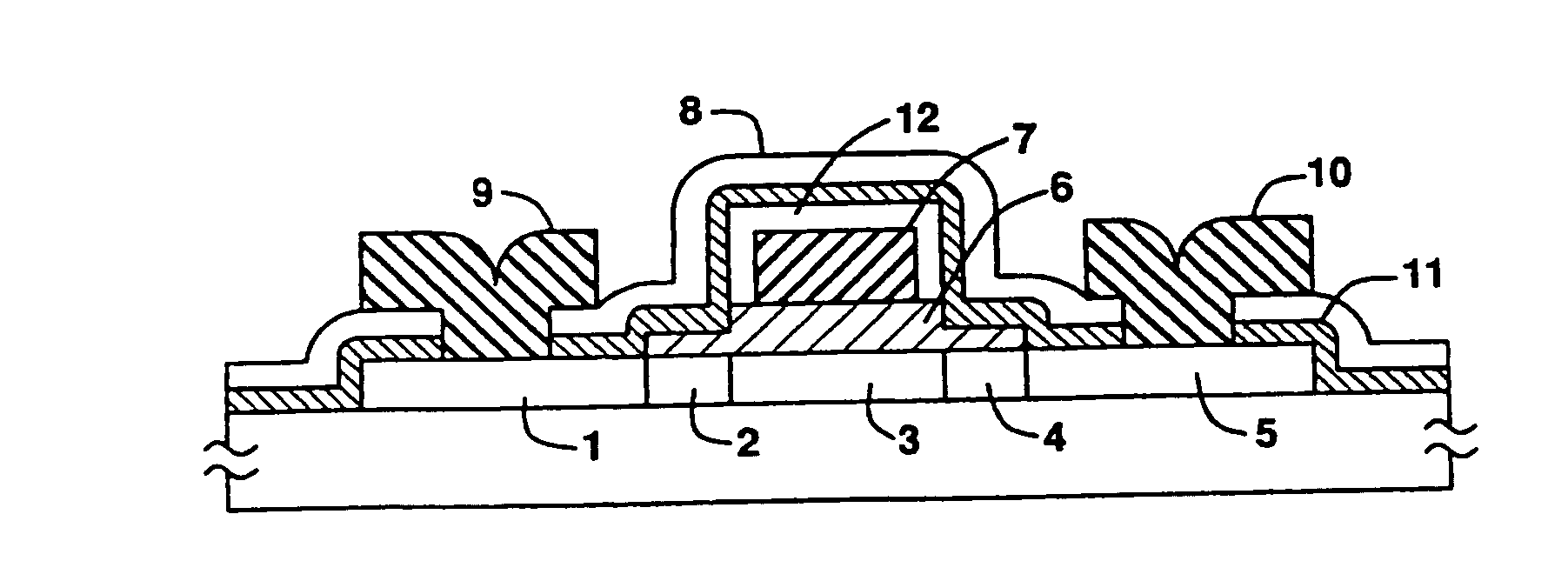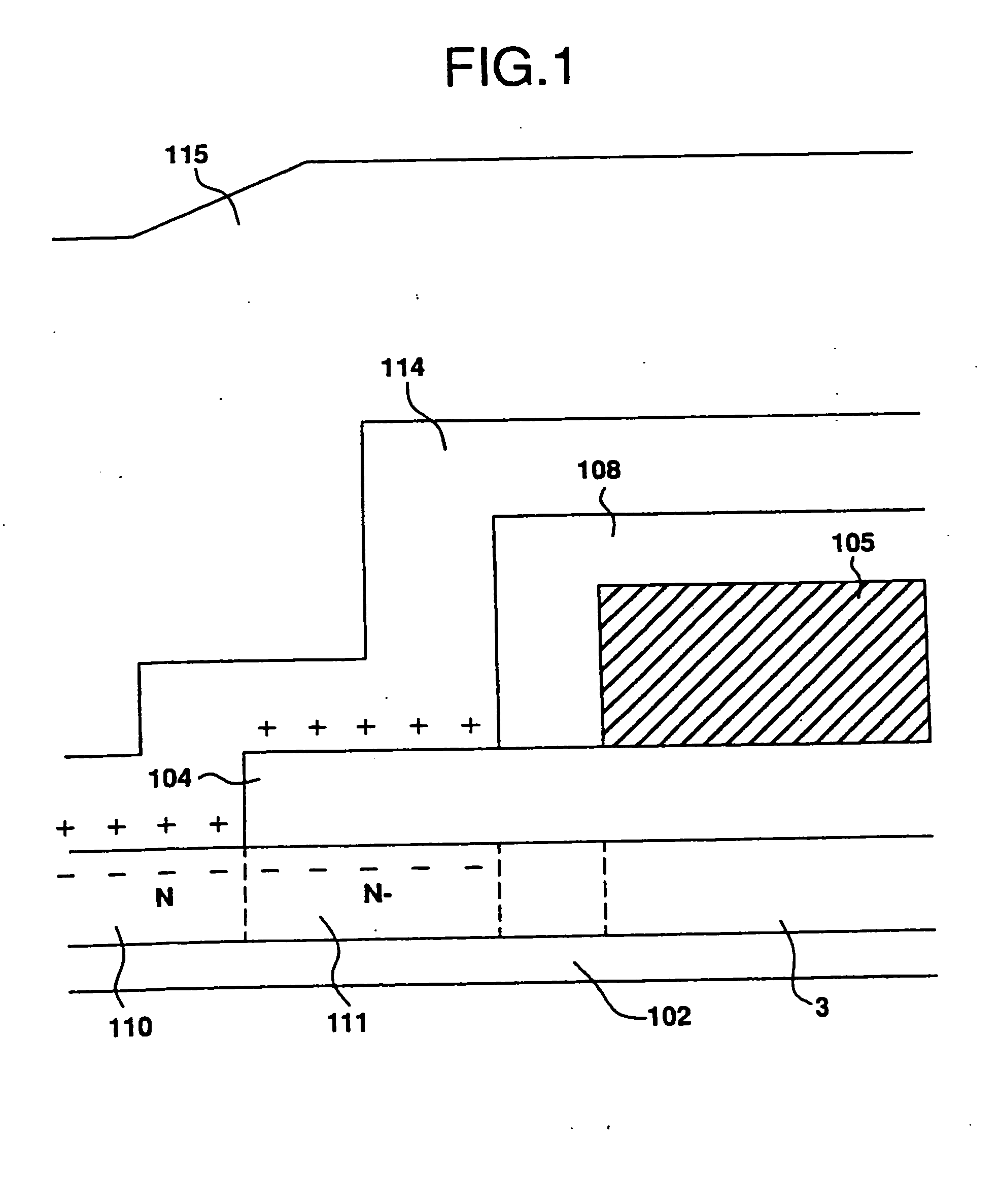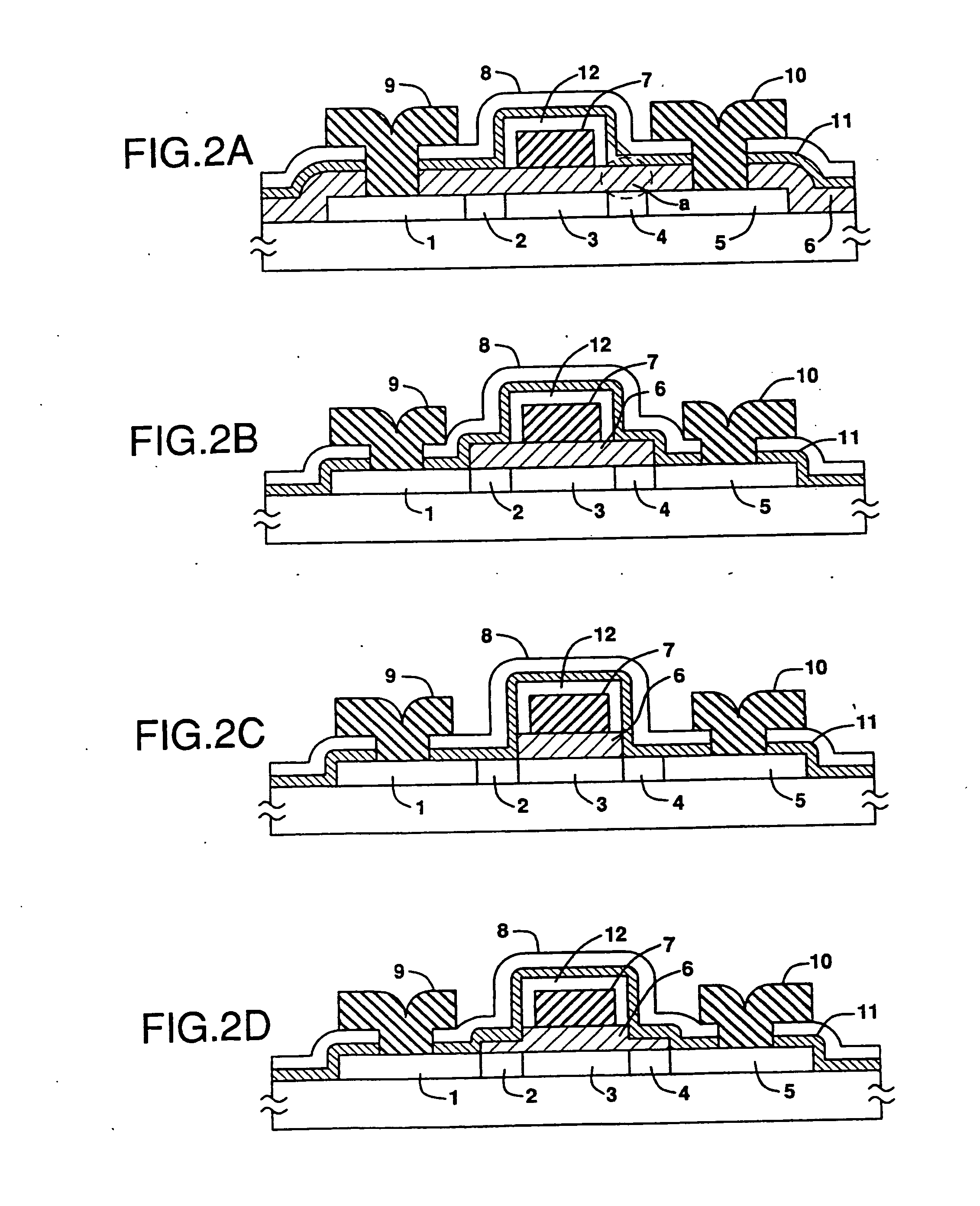Semiconductor device and a method for manufacturing the same
a technology of semiconductor devices and semiconductors, applied in semiconductor devices, electrical appliances, transistors, etc., can solve the problems of affecting the production yield and uniformity of characteristics of the obtained tfts, affecting the production efficiency of tfts, etc., to achieve high resistivity and high resistivity. region
- Summary
- Abstract
- Description
- Claims
- Application Information
AI Technical Summary
Benefits of technology
Problems solved by technology
Method used
Image
Examples
example 1
[0036] manufacturing process of a TFT in accordance with the present invention will be explained with reference to FIGS. 3A to 3H.
[0037] Initially, a non-alkaline glass substrate 101, for example, Corning 7059 (300 mm×400 mm or 100 mm×100 mm) is coated with a silicon oxide film 102 of 1000-3000 Å thick. The Silicon oxide film may be formed by sputtering in an oxygen atmosphere. However, it is preferable to use a plasma CVD with a TEOS (tetra ethoxy silane) gas used as a starting material to improve the productivity. In place of silicon oxide, other materials may be used. For example, a single layer of aluminum nitride, a double layer of silicon nitride and aluminum nitride. Aluminum nitride may be formed by a reactive sputtering in a nitrogen atmosphere.
[0038] Then, an active layer 103, for example, crystalline silicon is formed on the silicon oxide film 102. The “crystalline silicon” in this invention may be any form of silicon if it includes crystals at least partly, for example...
example 2
[0063] This example employs the same process as described in the first example until the structure shown in FIG. 3E is obtained. Thus, redundant explanations will be omitted. However, the thickness of the insulating film 104 in this example is thicker than that in the first example. For example, the insulating film is 1000-1500 Å thick, for example, 1200 Å, so that a gate leak current can be minimized and it can be endure a high voltage during the anodic oxidation.
[0064] Referring to FIG. 4A which corresponds to FIG. 3E, ion doping of nitrogen ions is carried out using the gate electrode and the insulating film 104′ as a mask at a dose of 1×1014-3×1016 atoms / cm2, for example, 2×1015 and with an acceleration voltage of 50-100 kV, for example, 80 kV. The acceleration voltage is made so high that the nitrogen ions almost pass through the regions 110 and 113 of the active layer on which the insulating film 104′ does not exist. Accordingly, the regions 110 and 113 are not effectively do...
example 3
[0071] Referring to FIG. 6A, in the same manner as in the first example, an underlying film comprising silicon oxide 102, an island form silicon film 103 of 800 Å having a crystallinity, a silicon oxide film 104 of 1200 Å, a gate electrode 105 made of aluminum of 200 nm-1 μm thick, and a porous anodic oxide film 107 (3000 Å-1 μm , e.g. 5000 Å thick) on the side surface of the gate electrode are formed on a Corning 7059 glass substrate 101.
[0072] Further, a barrier type anodic oxide film 108 is formed to a thickness of 1000-2500 Å in the manner as in the first example. (FIG. 6B).
[0073] Using the porous anodic oxide 107 as a mask, the silicon oxide film 104 is etched into a gate insulating film 104′. Then, using the barrier type anodic oxide 108 as a mask, the porous anodic oxide 107 is etched off. Subsequently, an impurity element is introduced by ion doping using the gate electrode with the barrier type anodic oxide formed thereon and the gate insulating film used as a mask, there...
PUM
 Login to View More
Login to View More Abstract
Description
Claims
Application Information
 Login to View More
Login to View More - R&D
- Intellectual Property
- Life Sciences
- Materials
- Tech Scout
- Unparalleled Data Quality
- Higher Quality Content
- 60% Fewer Hallucinations
Browse by: Latest US Patents, China's latest patents, Technical Efficacy Thesaurus, Application Domain, Technology Topic, Popular Technical Reports.
© 2025 PatSnap. All rights reserved.Legal|Privacy policy|Modern Slavery Act Transparency Statement|Sitemap|About US| Contact US: help@patsnap.com



